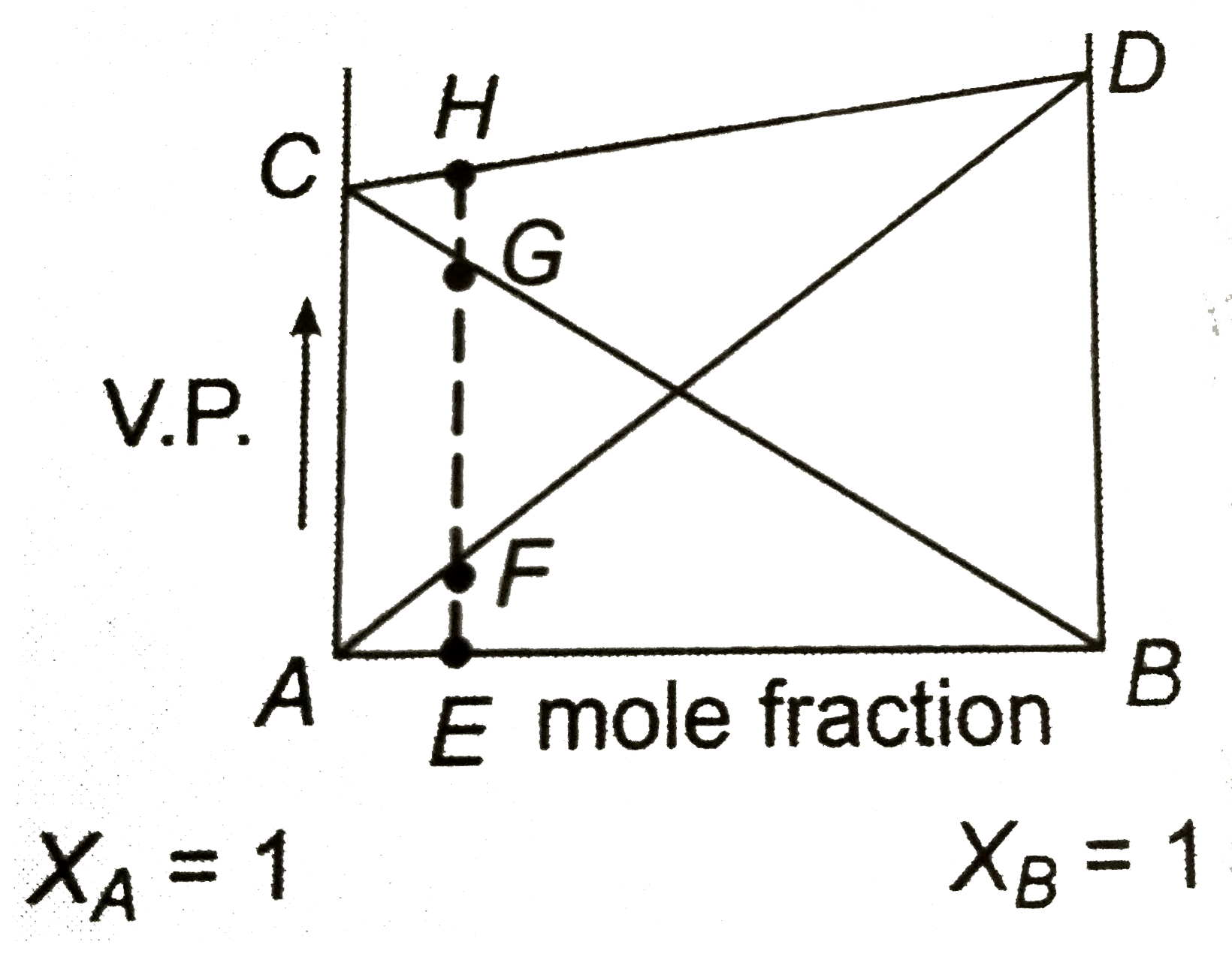Dalton's law of partial pressures is not applicable to
H2 and N2 mixture
H2 and Cl2 mixture
H2 and CO2 mixture
none of these
The correct Answer is:b
To determine when Dalton's law of partial pressures is not applicable, we need to understand the conditions under which this law holds true. Here’s a step-by-step solution:
Step 1: Understand Dalton's Law of Partial Pressures
Dalton's Law states that in a mixture of non-reacting gases, the total pressure exerted is equal to the sum of the partial pressures of each individual gas. Mathematically, it can be expressed as:
Ptotal=P1+P2+P3+...+Pn
where P1,P2, etc. are the partial pressures of the individual gases.
Step 2: Identify the Conditions for Applicability
Dalton's Law is applicable only to non-reactive gases. This means that the gases in the mixture must not undergo any chemical reactions with each other. If the gases react, they will change the number of moles of the gases present, which affects the total pressure and the partial pressures.
Step 3: Analyze the Given Gases
In the question, we are given pairs of gases:
1. H2 and N2
2. H2 and Cl2
3. H2 and CO2
- H2 and N2: These gases are non-reactive under normal conditions, so Dalton's law is applicable.
- H2 and Cl2: These gases are reactive. They can react to form HCl gas. Therefore, Dalton's law is not applicable here.
- H2 and CO2: These gases are also generally considered non-reactive under standard conditions, so Dalton's law is applicable.
Step 4: Conclusion
Dalton's law of partial pressures is not applicable to the pair of gases H2 and Cl2 because they can react with each other to form HCl.
Final Answer
Dalton's law of partial pressures is not applicable to H2 and Cl2.
---
Dalton's Law states that in a mixture of non-reacting gases, the total pressure exerted is equal to the sum of the partial pressures of each individual gas. Mathematically, it can be expressed as:
Ptotal=P1+P2+P3+...+Pn
where P1,P2, etc. are the partial pressures of the individual gases.
Dalton's Law is applicable only to non-reactive gases. This means that the gases in the mixture must not undergo any chemical reactions with each other. If the gases react, they will change the number of moles of the gases present, which affects the total pressure and the partial pressures.
In the question, we are given pairs of gases:
1. H2 and N2
2. H2 and Cl2
3. H2 and CO2
- H2 and Cl2: These gases are reactive. They can react to form HCl gas. Therefore, Dalton's law is not applicable here.
- H2 and CO2: These gases are also generally considered non-reactive under standard conditions, so Dalton's law is applicable.
Dalton's law of partial pressures is not applicable to the pair of gases H2 and Cl2 because they can react with each other to form HCl.
Dalton's law of partial pressures is not applicable to H2 and Cl2.
Topper's Solved these Questions
- BOOK - NARENDRA AWASTHI ENGLISHCHAPTER - GASEOUS STATEEXERCISE - Level 230videos
GASEOUS STATE
- BOOK - NARENDRA AWASTHI ENGLISHCHAPTER - GASEOUS STATEEXERCISE - Level 3 Passage 14videos
GASEOUS STATE
- BOOK - NARENDRA AWASTHI ENGLISHCHAPTER - ELECTROCHEMISTRYEXERCISE - Subjective problems14videos
ELECTROCHEMISTRY
- BOOK - NARENDRA AWASTHI ENGLISHCHAPTER - IONIC EEQUILIBRIUMEXERCISE - Subjective problems1videos
IONIC EEQUILIBRIUM
Similar Questions
Knowledge Check
- Question 1 - Select One
To which of the following mixture Dalton's law of partial pressure is not applicable ?
AH2 and HeBNH3 and HCICN2 and H2DN2 and O2
Dalton's law of partial pressure will not apply to which of the following mixture of gases
View Solutionwhy Dalton's law of partial pressure can be applied only to a mixture of non-reacting gases.
View SolutionCan Dalton's law of partial pressure be applied to a gaseous mixture of CO(g) and O2(g) ?
View SolutionBased on the given diagram, which of the following statements regarding the homogenous solution of two volatile liquids are correct? (1) Plots AD and BC show that Raoult's law is obeyed for the solution in which B is a solvent and A is the solute and as well as for that in which A is solvent and B is solute. (2) Plot CD shows that Dalton's law of partial pressures is obeyed by the binary solution of components A and B. (3) EF + EG = EH; and AC and BD correspond to the vapour pressure of the pure solvents A and B respectively.
 View Solution
View SolutionState Dalton's law of partial pressures . Derive the same from the kinetic gas equation .
View SolutionCan we apply Dalton's law of partial pressures to a mixture of carbon monoxide and oxygen ?
View SolutionWhy doesn’t Dalton’s law of partial pressures apply to a mixture of NH3 and HCl?
View Solution

